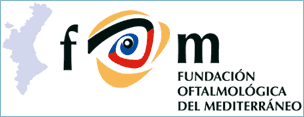For the organisation of the clinical processes of the Foundation, and for the administration, maintenance and use of the equipment and facilities of the hospital.
The Fundación Oftalmológica del Mediterráneo (FOM, Mediterranean Ophthalmological Foundation) is the legal entity that manages the Centre for Ophthalmological Research,
Teaching and Assistance in the Valencian Community. The main purpose of the Foundation is the promotion and encouragement of scientific and technical research in the field of ophthalmic medicine, the development of new diagnostic and therapeutic technologies, eye health care (mainly from a perspective of prevention) and cooperation for the development of third countries in socio-health policies.
LISITT has been developing since 2008 information systems aimed at the hospital and resources management of the FOM. For this, the latest technological trends in the development of service-oriented architectures and in information systems on web platforms have been used.
HORUS
The most important work performed for the FOM is the creation of a hospital management system called HORUS. Running since 2009, the system manages all clinical processes that take place in the hospital, from the reception of patients to the billing of services, including capturing the data of the clinical trials conducted with ophthalmic equipment.
The creation of this information system presents several technological challenges. Some of the most important are:
- The organisation of all hospital processes under a business model that must be implemented through a workflow control.
- The integration of the system with the hospital infrastructure (ophthalmological equipment for conducting clinical trials) to obtain results and incorporate them into the patient's clinical history.
- The interoperability of the system with other coexisting information systems, such as those depending on the Regional Ministry for Health or the user authentication systems with biometric signals.


This system has been created using Java EE architecture. Thanks to its open nature, it has been connected to other coexisting systems, by means of a service-oriented architecture.
The system is currently being improved, extending its functionality and its scope of application to other hospital work environments that facilitate the tasks of the staff working at the FOM.
SCADA
FOM is a modern institution located in a building that has been designed for the future. Therefore, much of the building components (air-conditioning and heating, lighting, sunshades, clinical equipment, OR cameras...) can be controlled using computer applications by means of programmable logic controllers (PLCs).
The control of the equipment via PLC is very rudimentary, since a very expressive but complex language is used for communication, which makes control tasks a tedious process. PLC suppliers often provide a SCADA software to facilitate this type of control.
SCADA is a software application used for production control, which provides communication with field devices (autonomous controllers) and which allows all control tasks to be performed centrally from a single station that combines access to all the information of the computers under control and the sending of operating instructions.
This project aimed at developing a SCADA using service-oriented architecture (SOA), which can combine different devices and protocols in a single interface and which provides an abstraction layer to access and control all the devices. Moreover, the SCADA provides additional features for the security of system access (access control), for the security of control instructions (e.g., to avoid setting the air-conditioning and heating systems to unreasonable levels), and for the automatic monitoring of all the devices' performance.
Moreover, the SCADA provides 2 different access interfaces: a web-based access, for which the necessary application has been developed, and a 3D browser-based access, which allows users to navigate the FOM virtually and to access computers depending on the user's location.




FOM













